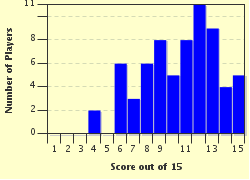Quiz Answer Key and Fun Facts
1. These two nations - strong allies in WW I - were the first in the 20th century to develop the idea of memorial tombs for unknown soldiers. Such tombs would honor ALL the missing and unidentified from each land. Can you name these two countries?
2. What precedent motivated US officials to propose a tomb for an American Unknown?
3. Most US Civil War historians know that the first remains buried at Arlington were Union dead from the War Between the States. But the warrior interred at the Arlington Tomb in 1921 died in what war?
4. To what military branch did the original US "Unknown" probably belong?
5. The final selection of America's WW I Unknown was to have been by a commissioned officer, but that duty was reassigned to an enlisted man. What European precedent prompted the change?
6. How was America's first Unknown brought home from France?
7. The homecoming of the WW I Unknown fostered (however briefly) a sense of national unity. Which of the following organizations did not take part in the Washington DC funeral procession?
8. The West face of the Tomb contains five lines of inscription: · HERE RESTS IN · HONORED GLORY · AN AMERICAN · SOLDIER · ********** What is the last line?
9. What event in 1958 PERMANENTLY altered the appearance of the Tomb area?
10. In May 1984, a fourth US serviceman joined the Tomb of the Unknowns. What remarkable fact ultimately set him apart from the others?
11. From its dedication in 1921 through 2018, the US Tomb has been guarded by?
12. This island nation brought her WW I Unknown home in 2004. The cover of his Tomb is inscribed with the Maori words "He Toa Matangaro No Aotearoa".
13. This Unknown returned home from France to the Capital Territory in 1993, 75 years after the Armistice. He rests in a Tasmanian blackwood coffin in the Hall of Memory. In what country is his tomb?
14. The Canadian Tomb of the Unknown Soldier, like other Tombs of Unknowns, is a place of quiet dignity and remembrance. But that dignity was shattered on 22 October 2014 by what tragic incident?
15. This island nation's Ryozen Kannon war memorial holds four services each day to commemorate the country's Pacific War dead. In what country is Ryozen located?
Source: Author
goatlockerjoe
This quiz was reviewed by FunTrivia editor
stedman before going online.
Any errors found in FunTrivia content are routinely corrected through our feedback system.

